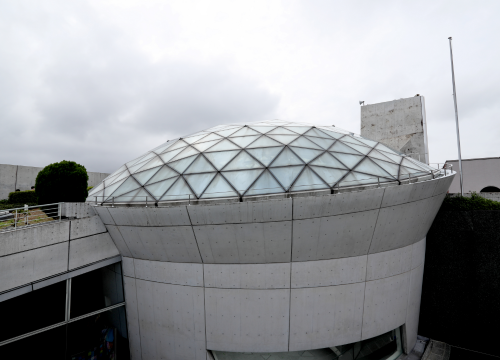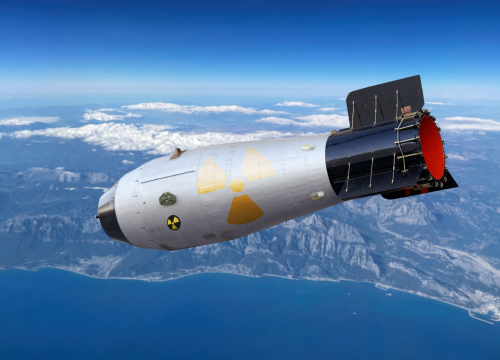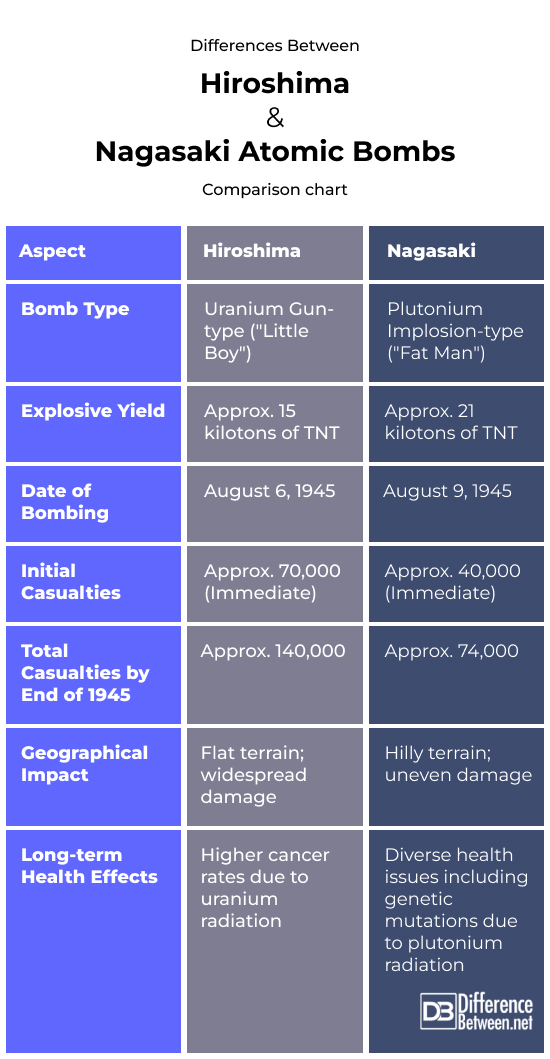Difference Between Hiroshima Atomic Bomb and Nagasaki Atomic Bomb
Ever wondered how two bombs might change everything? Remember Nagasaki and Hiroshima. The US dropped atomic bombs on these Japanese cities in the last phases of World War II, creating devastating fame. On August 6, 1945, Hiroshima was devastated, followed by Nagasaki on August 9. This bombardment began the nuclear age, the first time nuclear weapons were used in conflict, causing massive destruction.
Despite their differences, Hiroshima and Nagasaki are often mentioned together. Bomb designs and targets varied by bombing. Understanding these differences isn’t just details; it’s essential to understanding nuclear warfare. It shows military planning, armament technology, and, most importantly, the human cost of such overwhelming might.
Why analyze these differences? Simple. It’s more than history—it teaches nuclear destruction. It shows why nuclear weapons scare people and why many favor disarmament. We remember and analyze the Hiroshima and Nagasaki bombings to avert future disasters.

What is the Hiroshima Atomic Bomb?
Ever heard of “Little Boy”? The atomic bomb dropped on Hiroshima has this codename. History was darkened by this August 6, 1945 incident. First atomic bomb used in war, scary new military era.
The “Little Boy” bomb was unusual. Uranium gun-type bombs use ordinary explosives to blast uranium into another, causing a nuclear chain reaction. This seems like science fiction, yet Hiroshima people lived it. Imagine a 15-kiloton TNT output releasing 15,000 tons of explosives at once. We’re talking devastating power.
The immediate Hiroshima effect?
Terrible barely describes it. The explosion killed tens of thousands and devastated property throughout the city. The heat of the explosion burned the shadows of people and objects into the walls and pavements. A bustling metropolis became barren instantly. After the disaster, survivors experienced burns, radiation disease, and unique shock.
Bombing changed war and world, not just military tactics. “Little Boy” over Hiroshima is a stark reminder of human power’s destructive potential and the need to use it responsibly.

What is the Nagasaki Atomic Bomb?
The “Fat Man” atomic bomb hit Nagasaki, Japan, on August 9, 1945. The second and final nuclear war action occurred three days after Hiroshima. It changed World War II and demonstrated nuclear armament’s devastating potency.
“Fat Man” differs from Hiroshima in many ways. This plutonium implosion bomb was more complex than the Little Boy’s bomb. Compressing plutonium into a supercritical mass using explosives caused a nuclear explosion. The powerful “Fat Man” has 21 kilotons of TNT. An explosion stronger than 21,000 tons of dynamite is incredible.
Nagasaki caused instant damage. The bomb exploded in a crowded area, generating an enormous fire and shockwave. Burning and collapsed buildings caused major damage. Tens of thousands died fast, and many more from injuries and radiation illness in the days and weeks that followed. After the disaster, people endured unimaginable suffering and radiation exposure in an empty environment.
With its unique design and destructive outcome, the Nagasaki bombing showed the nuclear weapons’ deadly potential. It stresses diplomatic solutions and preventing such horrible weapons. It’s sobering that “Fat Man” affected Nagasaki and that peace often comes from nonviolence.
Similarities Between Hiroshima and Nagasaki Bombs
Shared Goals: Both bombings sought to conclude World War II by forcing Japan’s surrender.
Despite their dissimilar designs (“Little Boy” was uranium-based and “Fat Man” plutonium-based), both bombs used advanced nuclear fission technology, a major development in military armament.
The attacks forced Japan surrender, ending World War II quickly and dramatically. They showed how destructive nuclear weapons are and transformed worldwide military dynamics.
Differences Between Hiroshima and Nagasaki Atomic Bombs
Let’s break down the key differences between the Hiroshima and Nagasaki bombings in a more straightforward, human-centric way:
1. The Bombs Themselves
Hiroshima’s “Little Boy”: a simple bomb using uranium, like a bullet shot into a target to start a nuclear chain reaction.
Nagasaki’s “Fat Man”: a more complex bomb using plutonium, where explosives squeeze the core into a supercritical state, causing a massive explosion.
2. The Power of the Explosions
Hiroshima: Think of the power of 15,000 tons of TNT.
Nagasaki: Now, up that to about 21,000 tons of TNT—a bigger blast.
3. Where They Hit and What Happened
Hiroshima: The bomb fell over the city center, flattening everything in a wide, open area.
Nagasaki: Here, the bomb exploded over a hilly area, which meant the damage was less uniform, with some parts more protected than others.
4. The Immediate Human Cost
Hiroshima: Imagine around 90,000 to 120,000 lives lost in an instant, reaching about 140,000 by year’s end.
Nagasaki: Picture a slightly lower but still horrific number, with 40,000 immediate deaths and about 74,000 by the end of 1945.
5. The Lingering Effects
Hiroshima: Survivors faced long-term health issues like cancer due to uranium radiation.
Nagasaki: Different radiation from the plutonium bomb led to other long-term health problems, including genetic damage.
Differences Between Hiroshima and Nagasaki Atomic Bombs: Comparison chart

Summary
While intended to end World War II, the Hiroshima and Nagasaki atomic bombings differed. “Little Boy,” a uranium bomb, devastated a flat Hiroshima. Because Nagasaki is hilly, the plutonium bomb “Fat Man” caused widespread damage. The Nagasaki bomb was stronger, and Hiroshima lost more despite both cities’ massive losses. Hiroshima “uranium” caused more cancer in survivors.
need to prevent disasters.
Reflecting on these bombings demonstrates their historical impact. They ended World War II and inaugurated the nuclear age, changing global politics and warfare. These events demonstrate the devastation of war, the need for peace, and the ethical usage of great technologies. Understanding these variances helps us grasp nuclear weapons’ full impact and the need to prevent disasters.
FAQs
1. Why did the US bomb Hiroshima and Nagasaki instead of Tokyo?
The US chose Hiroshima and Nagasaki because they were important military and industrial spots. They wanted to avoid Tokyo, already heavily bombed, to make the impact of the new weapon clear.
2. Which nuclear bomb was more powerful?
The Nagasaki bomb, “Fat Man,” was stronger. It had about 21 kilotons of TNT, more than Hiroshima’s “Little Boy,” which had around 15 kilotons.
3. Was the bombing of Hiroshima and Nagasaki the first atomic bomb?
Yes, those bombings were the first time atomic bombs were used in a war.
4. What’s the difference between Little Boy and Fat Man?
“Little Boy” in Hiroshima used uranium and was simpler. Nagasaki’s “Fat Man” used plutonium and was more complex.
5.What is the name of the bomb that can destroy the world?
No single bomb like that exists, but there’s talk about “doomsday devices” in stories and theories.
6. Is there still radiation in Hiroshima?
No, Hiroshima’s radiation went back to normal levels, just like any other city, thanks to time and clean-up work.
7. Why is Chernobyl still radioactive and Hiroshima is not?
Chernobyl had a lot more radioactive stuff that lasts longer than what was in the Hiroshima bomb. The bomb caused quick, but not lasting radiation.
8. How come Nagasaki is not radioactive?
Nagasaki, like Hiroshima, cleaned up and saw radiation levels drop back to normal pretty quickly.
9. How long did Nagasaki take to rebuild?
Nagasaki started rebuilding right after the war. It took many years to fully get back on its feet and become the modern city it is today.
- Difference Between Suicide and Euthanasia - May 22, 2024
- Difference Between Vitamin D and Vitamin D3 - May 21, 2024
- Difference Between Running Shoes and Walking Shoes - April 30, 2024
Search DifferenceBetween.net :
5 Comments
Leave a Response
References :
[0]Teller, E., & Brown, A. (1962). The legacy of Hiroshima. Naval War College Review, 15(6), 5.
[1]Southard, S. (2015). Nagasaki Deluxe: Life After Nuclear War. Penguin.
[2]Douple, E. B., Mabuchi, K., Cullings, H. M., Preston, D. L., Kodama, K., Shimizu, Y., ... & Shore, R. E. (2011). Long-term radiation-related health effects in a unique human population: lessons learned from the atomic bomb survivors of Hiroshima and Nagasaki. Disaster medicine and public health preparedness, 5(S1), S122-S133.
[3]1 Douple, E. B., Mabuchi, K., Cullings, H. M., Preston, D. L., Kodama, K., Shimizu, Y., ... & Shore, R. E. (2011). Long-term radiation-related health effects in a unique human population: lessons learned from the atomic bomb survivors of Hiroshima and Nagasaki. Disaster medicine and public health preparedness, 5(S1), S122-S133.
[4]2 Douple, E. B., Mabuchi, K., Cullings, H. M., Preston, D. L., Kodama, K., Shimizu, Y., ... & Shore, R. E. (2011). Long-term radiation-related health effects in a unique human population: lessons learned from the atomic bomb survivors of Hiroshima and Nagasaki. Disaster medicine and public health preparedness, 5(S1), S122-S133.
[5]3 Teller, E., & Brown, A. (1962). The legacy of Hiroshima. Naval War College Review, 15(6), 5.
[6]4 Douple, E. B., Mabuchi, K., Cullings, H. M., Preston, D. L., Kodama, K., Shimizu, Y., ... & Shore, R. E. (2011). Long-term radiation-related health effects in a unique human population: lessons learned from the atomic bomb survivors of Hiroshima and Nagasaki. Disaster medicine and public health preparedness, 5(S1), S122-S133.
[7]5 Douple, E. B., Mabuchi, K., Cullings, H. M., Preston, D. L., Kodama, K., Shimizu, Y., ... & Shore, R. E. (2011). Long-term radiation-related health effects in a unique human population: lessons learned from the atomic bomb survivors of Hiroshima and Nagasaki. Disaster medicine and public health preparedness, 5(S1), S122-S133.
[8]6 Southard, S. (2015). Nagasaki Deluxe: Life After Nuclear War. Penguin.
[9]7 Teller, E., & Brown, A. (1962). The legacy of Hiroshima. Naval War College Review, 15(6), 5.
[10]8 Southard, S. (2015). Nagasaki Deluxe: Life After Nuclear War. Penguin.
[11]9 Southard, S. (2015). Nagasaki Deluxe: Life After Nuclear War. Penguin.
[12]10 Douple, E. B., Mabuchi, K., Cullings, H. M., Preston, D. L., Kodama, K., Shimizu, Y., ... & Shore, R. E. (2011). Long-term radiation-related health effects in a unique human population: lessons learned from the atomic bomb survivors of Hiroshima and Nagasaki. Disaster medicine and public health preparedness, 5(S1), S122-S133.
[13]11 Douple, E. B., Mabuchi, K., Cullings, H. M., Preston, D. L., Kodama, K., Shimizu, Y., ... & Shore, R. E. (2011). Long-term radiation-related health effects in a unique human population: lessons learned from the atomic bomb survivors of Hiroshima and Nagasaki. Disaster medicine and public health preparedness, 5(S1), S122-S133.
[14]12 Douple, E. B., Mabuchi, K., Cullings, H. M., Preston, D. L., Kodama, K., Shimizu, Y., ... & Shore, R. E. (2011). Long-term radiation-related health effects in a unique human population: lessons learned from the atomic bomb survivors of Hiroshima and Nagasaki. Disaster medicine and public health preparedness, 5(S1), S122-S133.
[15]Image credit: https://www.canva.com/photos/MAFIE1dL-vo-nagasaki-atomic-bomb-museum/
[16]Image credit: https://www.canva.com/photos/MAFIoOOk98w-nuclear-bomb-flies-in-the-air-atomic-world-war-atom-bomb/

Person what wrote article not English speaker native obvious. Full of constructions strange grammatical. Thus not could through it get.
Yeah it is difficult for lecturers(english).science students find it easy especially from INDIA TAMIL NADU
THANJAVUR 613004.
Okay, Yoda, your response was no picnic to read. It’s always obvious, to a native speaker of English, when something is written by someone who is not. Either you pulled off a great mimic/mock (Congrats! – Loved it!) or you’re not a native speaker of English yourself.
Very good technical article.
Nagasaki was not the primary target for fat man, but the secondary target, attacked because the primary target was obscured by cloud